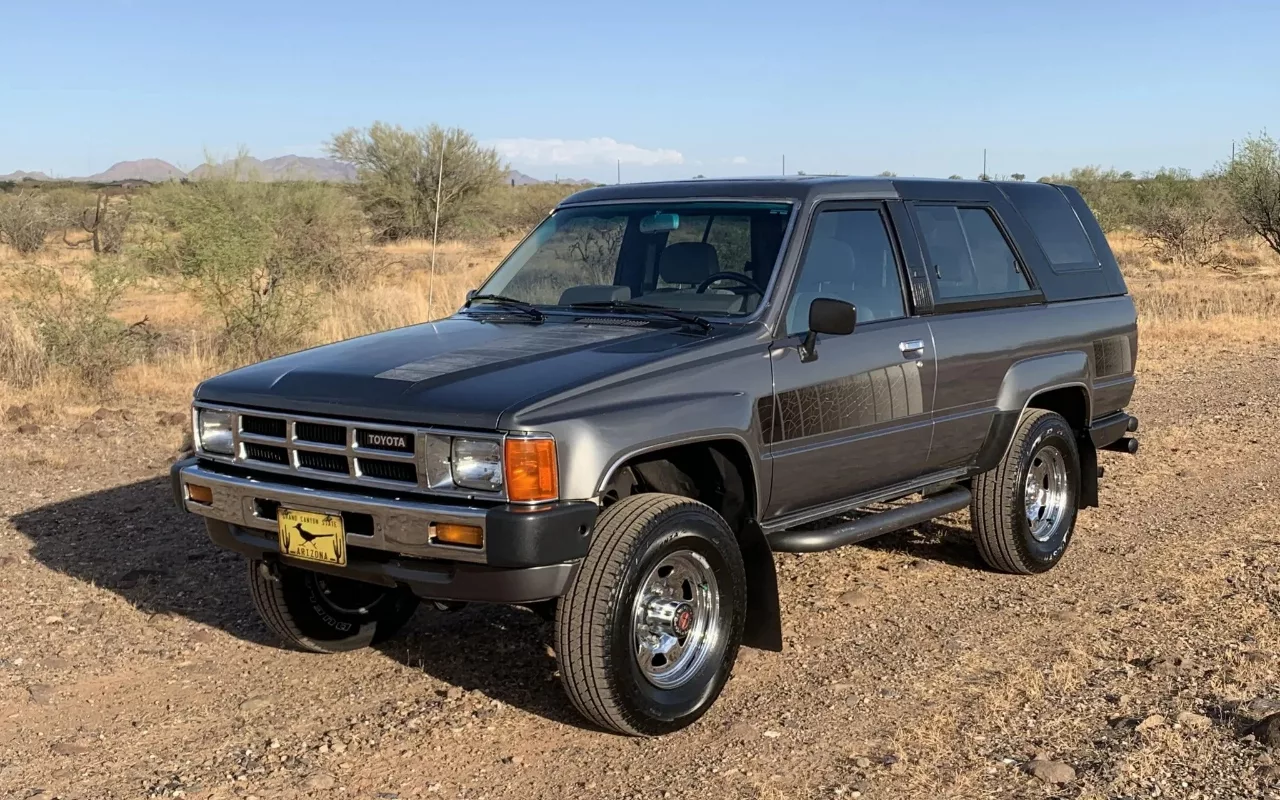Your cart is currently empty!

5 Common Problems With The First-Gen 1984 – 1989 Toyota 4Runner
The Toyota 4Runner is a standout SUV that has dominated the charts as one of Toyota’s most popular and enduring models. While today’s 4Runner is loved for its sheer reliability and off-road capabilities, the old models had some issues. We’ve shared the top problems with The first-gen 1984 – 1989 Toyota 4Runner that enthusiasts should know.
The 4Runner saga started when the SUV made its first-generation debut in the 1984 model year. Toyota produced the first-generation 4Runner until 1989. At its core, the initial iteration of the 4Runner was more than just an SUV. It had two doors and a distinctive fiberglass frame extending over the rear seats and cargo area. A descendant of the Toyota Hilux pickup truck, the 4Runner blurred the lines between SUVs and pickup trucks. Today, enthusiasts should expect to pay around $17,367 for a first-generation Toyota 4Runner.
As with any automotive icon, the first-generation 4Runner had its fair share of challenges. This article discusses the common problems with the first-gen 1984 – 1989 Toyota 4Runner, and what you should expect on the used car market.
1. Rust
Rust is a huge problem in the early 4Runners, and it can significantly impact the vehicle’s structural integrity and overall condition. It was more common on models that lived In areas with cold climates, where folks salt the roads. The lack of factory undercoating and the use of thinner steel in body panels make these 4Runners more susceptible to rust.
This corrosion compromises the vehicle’s stability and leads to structural issues, affecting safety and potentially causing body panel failures. Regular inspections and rust prevention measures are crucial to maintaining the longevity of the first-gen 1984 – 1989 Toyota 4Runner.
2. Engine Head Gasket Failure
The engine head gasket maintains a sealed and efficient combustion process within the engine. The first-generation 4Runner offered two engine options: a 2.4L four-cylinder engine and a 3.0L V6 engine. The 2.4-liter inline-4 engine generated 116 horsepower at 4,800 RPM and 140 lb.-ft. of torque at 3,600 RPM.
The 1984–1989 4Runners’ 2.4-liter four-cylinder and 3.0-liter V6 engines were prone to head gasket failure. The faulty head gasket caused overheating and loss of power. In severe cases, it also leads to total engine damage. This problem could manifest as overheating and power loss.
4. Steering System Pump Leaks
Furthermore, the suspension system in these models tended to be stiff, resulting in a less forgiving ride on uneven surfaces. The steering system issue often stemmed from power steering pump leaks and worn steering components.
The steering system is crucial for a vehicle’s maneuverability and driver control. Power steering pump leaks can lead to a gradual loss of power steering fluid, impacting the system’s effectiveness. This loss of steering effectiveness increases steering effort, making it harder for drivers to steer, especially at lower speeds or during maneuvers.
Worn steering components caused imprecise and erratic steering behavior. This results in a compromised overall safety and handling of the vehicle.
5. Dashboard Cracking Issue
The first-generation 4Runners encountered interior challenges, specifically with the issue of dashboard cracking. This problem stemmed from the use of low-quality plastic material.
The use of low-quality plastic material in the first-generation 4Runner’s dashboard resulted in a cracking issue. As this plastic material aged, it became brittle, leading to visible cracks.
Beyond being an aesthetic concern, dashboard cracking compromises the integrity of the instrument panel. It affects the readability of gauges and impacts the functionality of controls. Addressing this issue may involve preventative measures to minimize cracking. In worst cases, you may need to replace it with more durable materials to ensure the longevity and usability of the dashboard.
Author Details

Our Team
Hi there! Welcome to Flagship Drive.
I’m Wilfred Nkhwazi, a passionate car lover from Africa. I created this platform to share expert insights, honest reviews, and a fresh perspective on the latest cars and automotive trends. Let’s hit the road together.
Advertisement

Recent News

